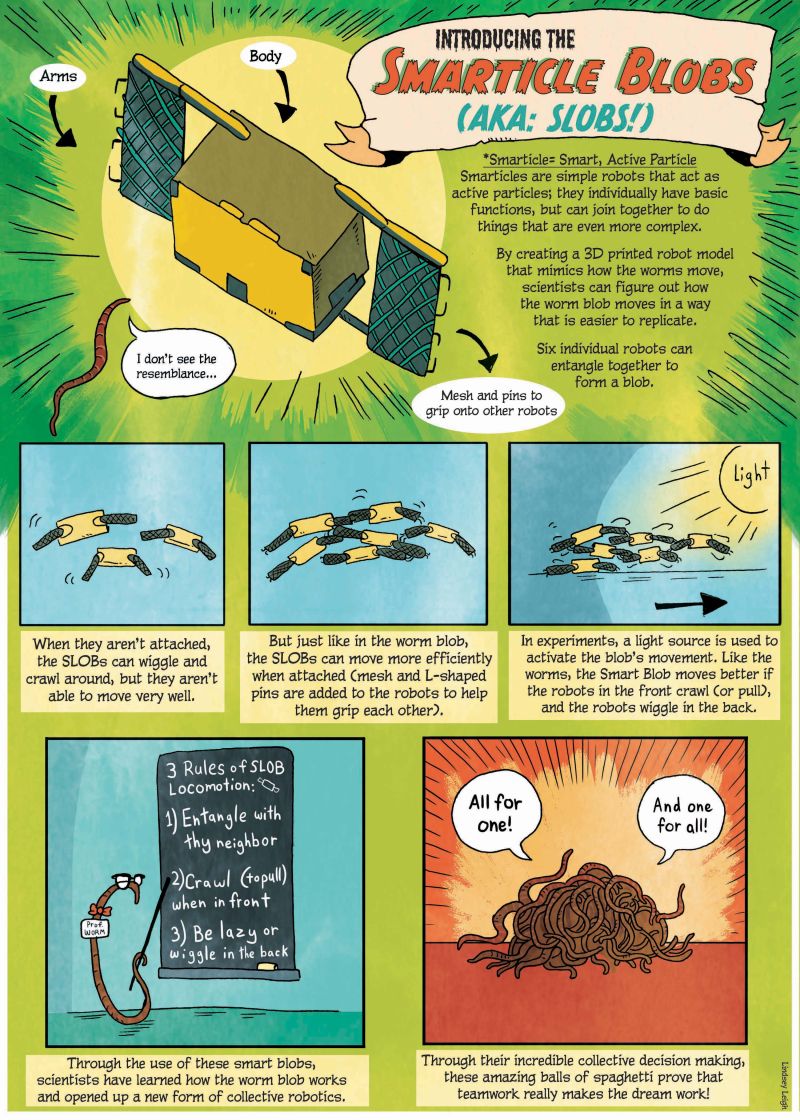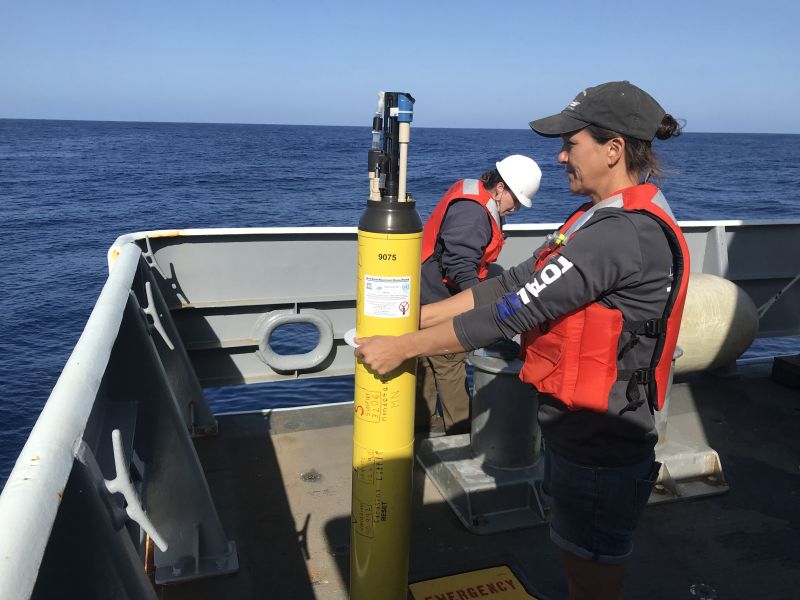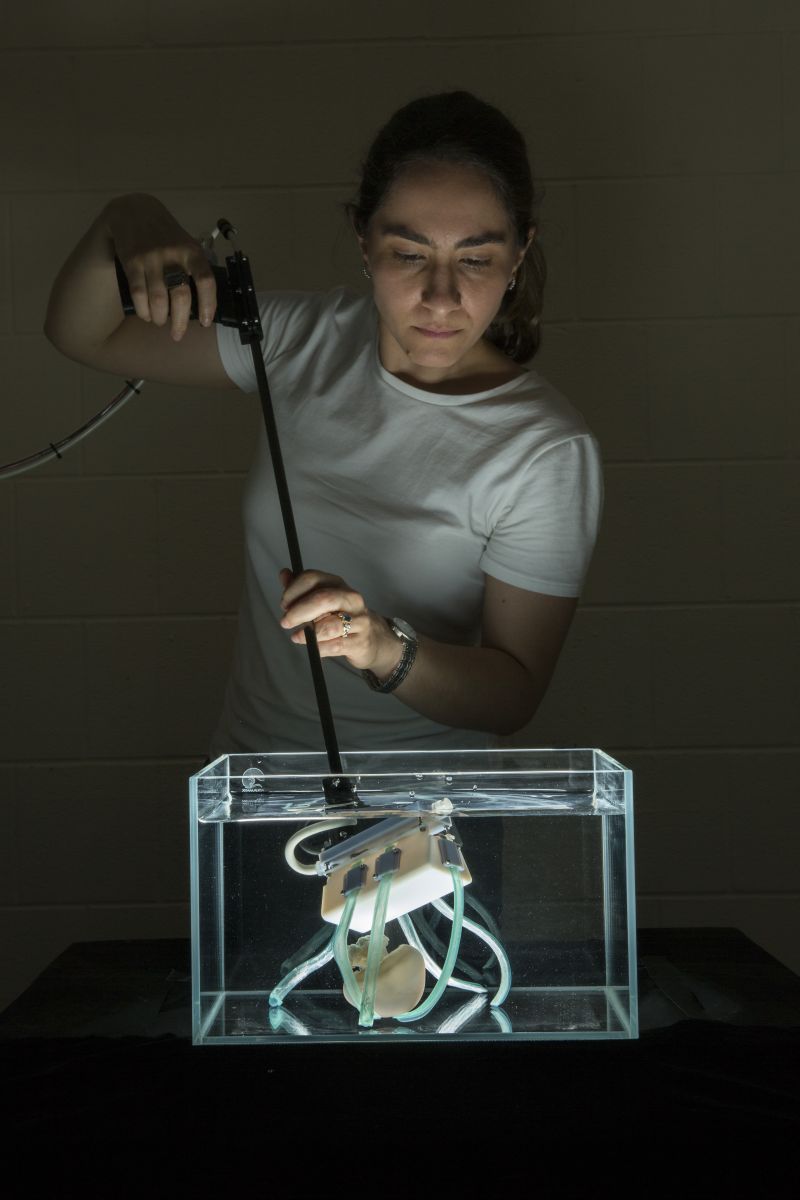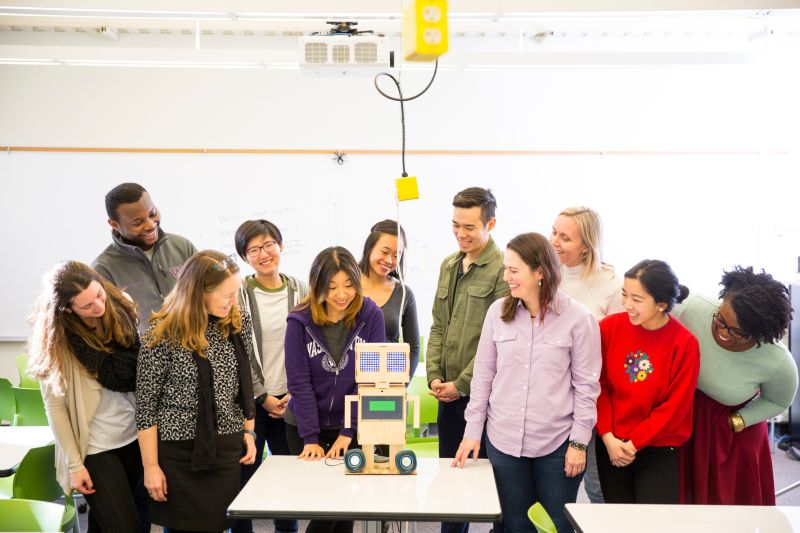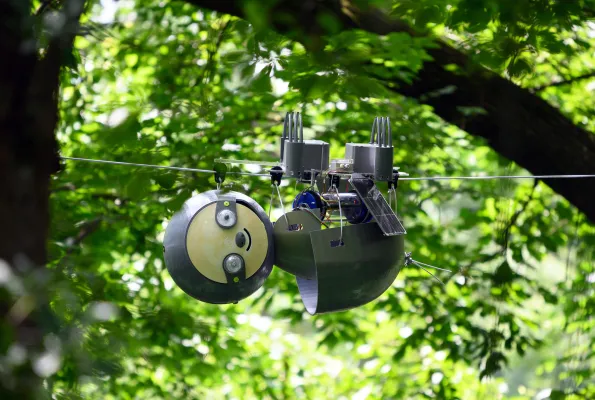
7 cool NSF-funded robots that are advancing science and helping society
Whether microscopic or human-sized, inspired by tree-dwelling mammals or pasta, the family of U.S. National Science Foundation-funded robots captures the incredible innovation possible with cross-disciplinary collaboration across STEM fields. The critical research NSF supports enables advances in the physical aspects of robotic systems and how they "think" and understand the world around them. Scientists and engineers are training robots to support the workforce; training the workforce that will use them; and studying how the world understands and interacts with these autonomous systems. The following are seven projects featuring amazing new robots and highlighting the exciting ways in which robots could benefit individuals, industry and society.
1. Swarming Nanobot SLOBS
Understanding how organisms move, eat, breathe and interact with their environments -- and how those actions are affected by their genes, musculature and brains -- is critical to advancing the understanding of adaptation and evolution. This can lead to advances in robotics, prosthetics and vehicles. NSF-supported researchers are examining how California blackworms move and form collective aggregations, called blobs, that protect individual worms and enable actions that would be impossible for single worms alone. The scientists created a swarm of nanobots called "Smarticle" (smart, active particle) blobs, or SLOBS, to model and better understand this behavior. Eventually, the SLOBS might help develop robots that can work with little communication to accomplish tasks in the real world. The researchers also created comics in multiple languages to help engage kids in the science.
2. Global Robotic Network
Robotic profiling floats equipped with sensors are helping scientists measure and sense changes in the ocean, including in places humans can’t easily reach, like the deep sea. Global Ocean Biogeochemistry Array floats -- the first 12 of which will be launched over the next month -- will carry chemical and biological sensors to take measurements from a depth of 2,000 meters to the surface and will report every 10 days for the next several years via satellite communications systems. The measurements will transform the ability to observe and predict, at the global scale, the effects of climate change on the ocean and the many organisms that call it home. Each float was also adopted and named by a grade school class.
3. Micro Back-Flipping Robot
Robots also can go inside -- inside humans, that is! NSF funding helped develop the mechanics and computing necessary to create microbots that can travel within the human body and provide insight into the state of internal organs or help deliver drugs to hard-to-reach locations. Directly administering drugs to specific sites can help avoid harmful side effects, including hair loss or stomach bleeding. One such robot is the size of a few human hairs and can do back (and side) flips to help deliver medicines to the colon and other organs that have rough terrain. The flips are created by applying a rotating external magnetic field. The robot has been tested in experiments in animal models, and the researchers hope human use is on the horizon.
4. Soft Robotic Fingers
Robots can serve as crucial tools for conducting research on living specimens, especially undersea creatures sensitive to human contact. NSF-funded scientists developed a tool that resembles soft robotic linguine fingers for use in handling jellyfish. Specimens that were handled by the robotic grippers showed far less stress than those touched by human hands. These soft robots will also enable researchers to better study sensitive coral formations and other organisms to understand how they evolve and adapt without damaging them. On land, the robotic fingers could be used to harvest fruit without bruising it or rehabilitate the muscles of stroke patients -- things rigid robots can’t do.
5. WALL-E Meets Big Hero 6
It’s not easy being a teenager. According to the Pew Research Center, anxiety and depression are rising among U.S. teens, with potentially large-scale negative consequences for their education, development and overall health. As any parent or teacher knows, getting teenagers to talk about their mental state can be a challenge. Enter EMAR, the Ecological Momentary Assessment Robot, designed by NSF-funded scientists to explore the idea of using robots to accurately measure stress levels in teenagers. An intentionally lo-fi mashup of the movie characters Wall-E and "Big Hero 6’s" Baymax, EMAR is exploring whether schools can incorporate robots aimed to help understand and address health issues common in students in the U.S. The research team also led a design challenge where teens from local high schools designed their own social robots.
6. SlothBot
While many robots are envisioned as a means to perform tasks more quickly and efficiently than humans, some robots perform better by moving slowly. SlothBot, a slow-moving and energy-efficient robot, lingers among the trees to monitor animals, plants and the environment. Created by engineers under the Robotarium project at Georgia Tech in Atlanta, SlothBot mimics the low-energy lifestyle of its namesake, sloths. Powered by solar panels and using innovative power management technology, the robot was tested at the Atlanta Botanical Garden, where it monitored temperature, carbon dioxide levels and other information. SlothBot, which moves on a cable strung between two trees, is programmed to only move for essential reasons, such as locating the sun used to power it. By conserving its energy, the robot can perform tasks for longer periods of time. The researchers envision SlothBots having roles in climate monitoring and species protection as well as precision agriculture.
7. Four-legged Robots for all
Robots that mimic the movement capabilities of four-legged animals can go where wheeled robots cannot, making them ideal for use in many applications. However, existing quadruped robot research platforms are expensive to build and maintain, putting them out of reach for many startups, small labs and educational institutions. With support from NSF, teams of engineers in the U.S. and Germany have created a relatively low-cost, easy-to-assemble platform called Solo 8 as an accessible research testbed. The robot’s torque-controlled motors and actuated joints provide the functionality of more expensive legged robots, allowing it to take multiple configurations, move with a variety of gaits, jump, make sharp changes in direction, and right itself if overturned. Additionally, all of Solo 8’s construction files are freely available online, enabling scientists to customize the configuration for their own innovative purposes and develop their own technology.

